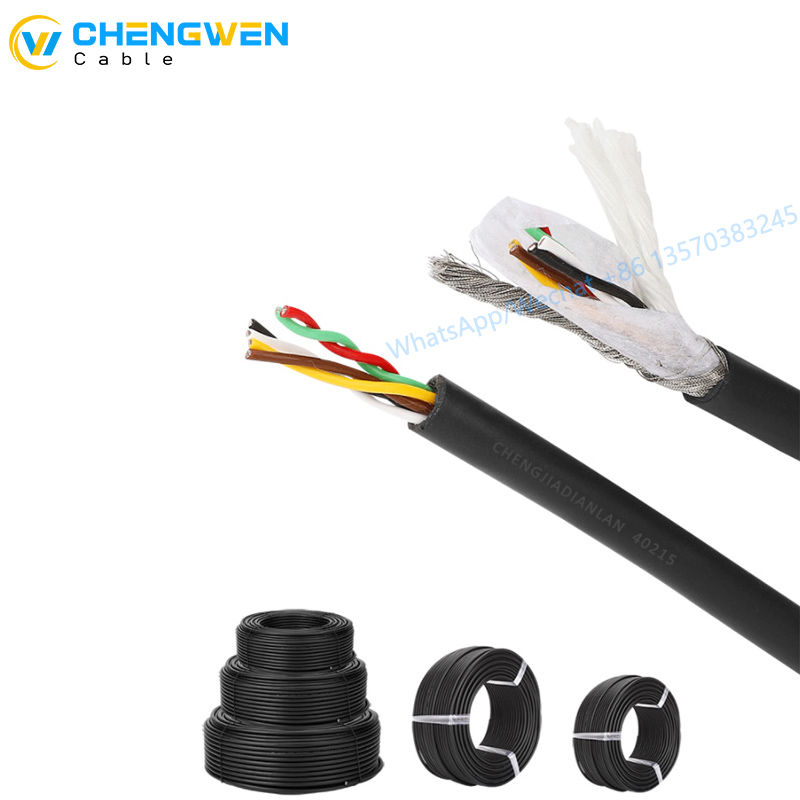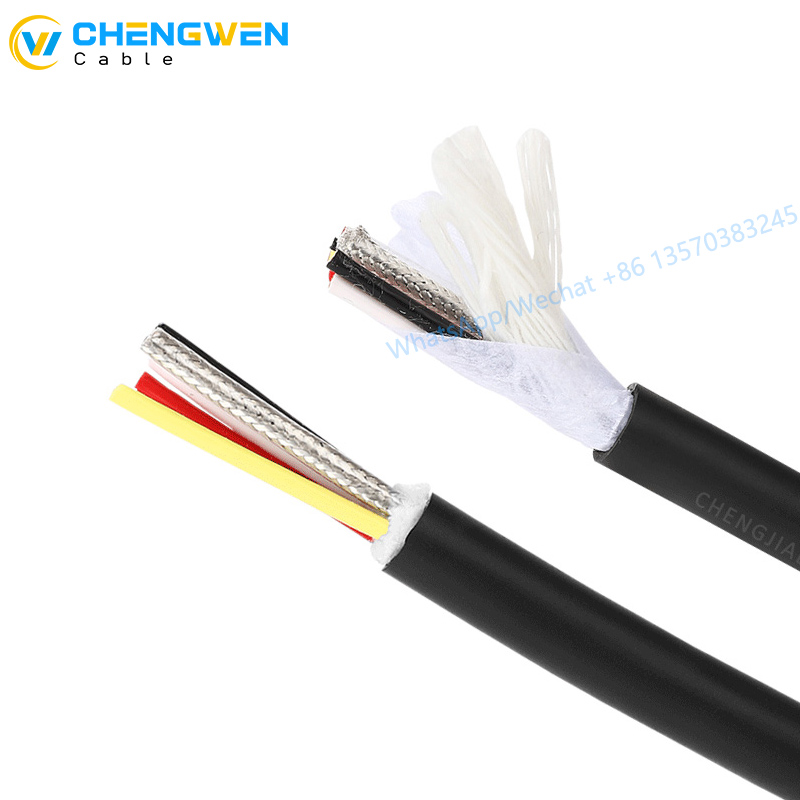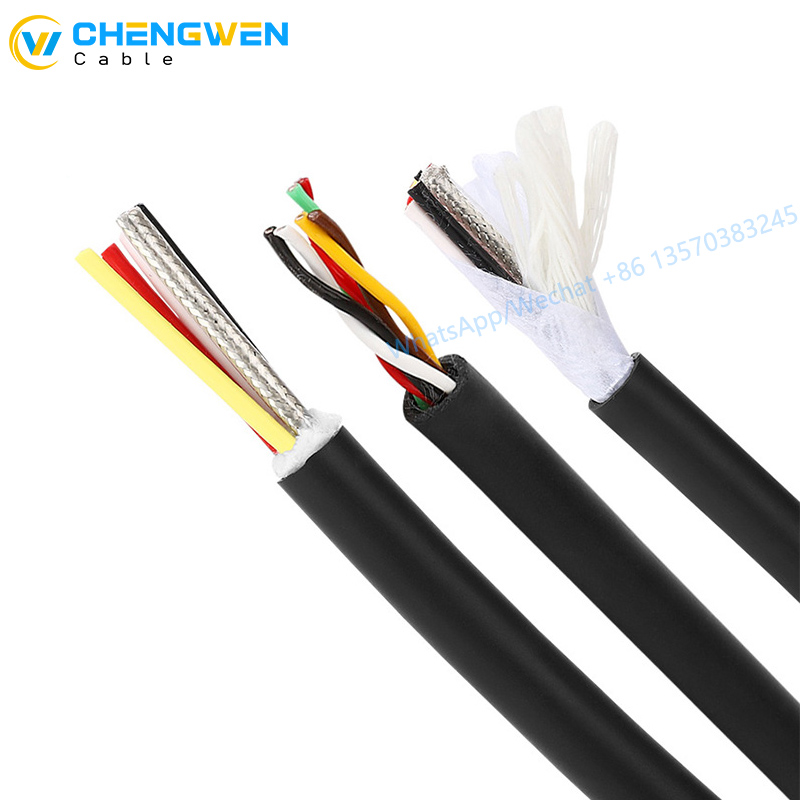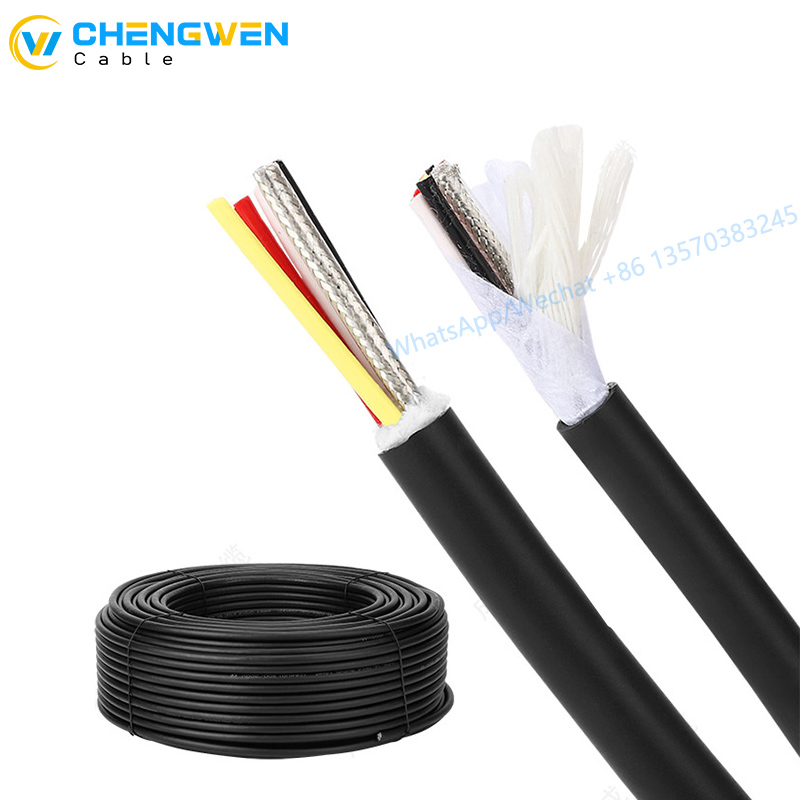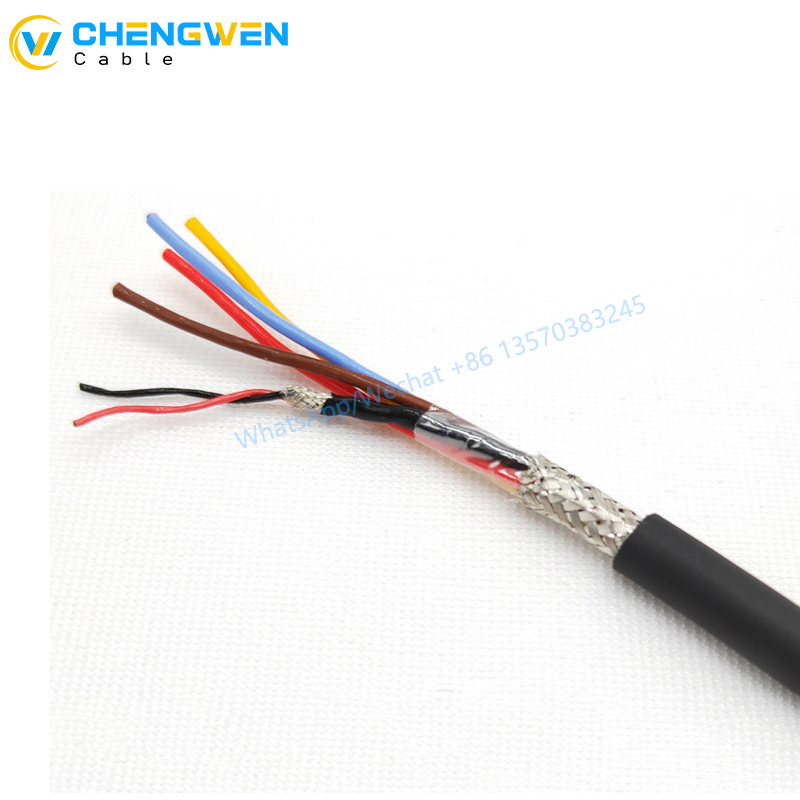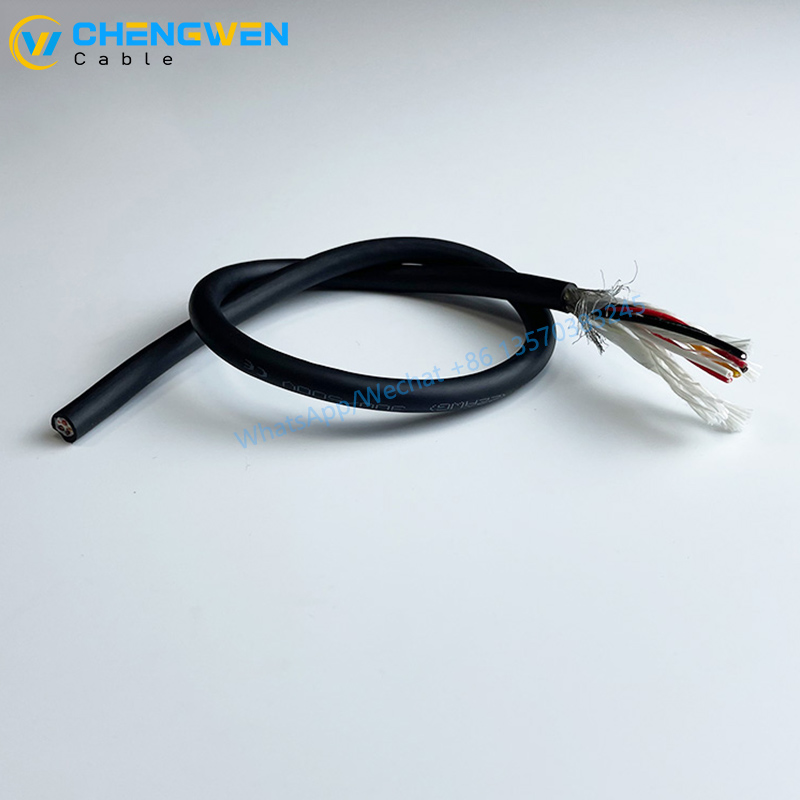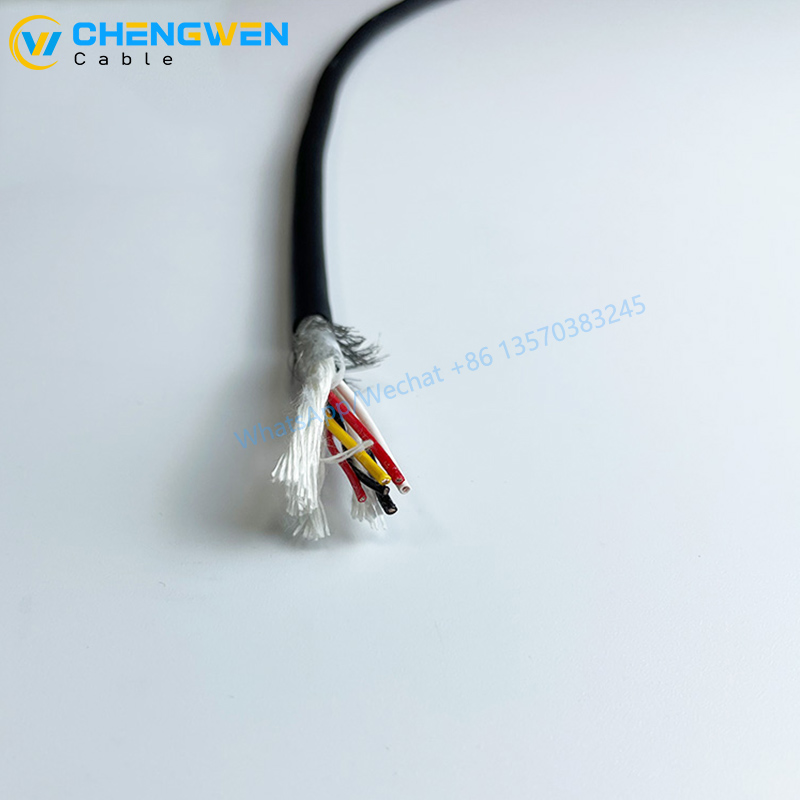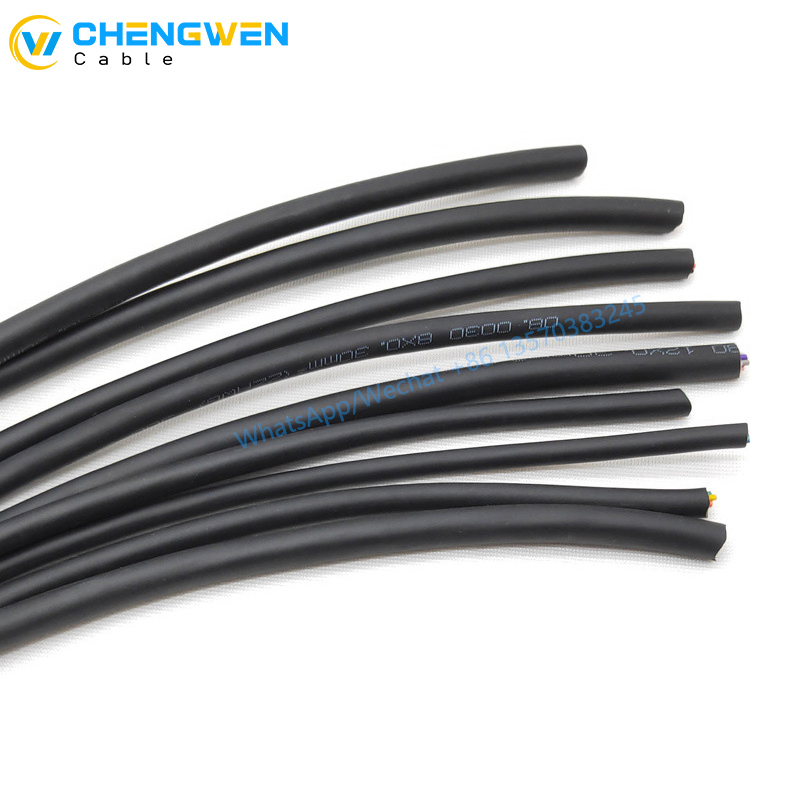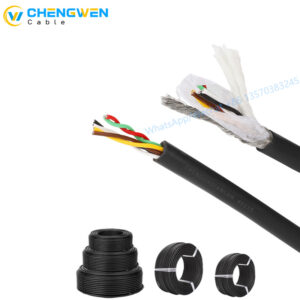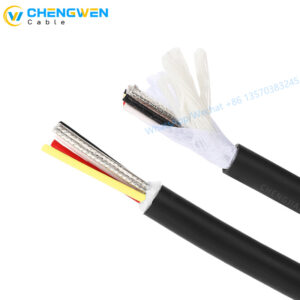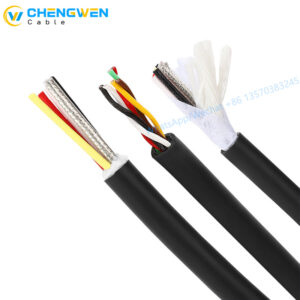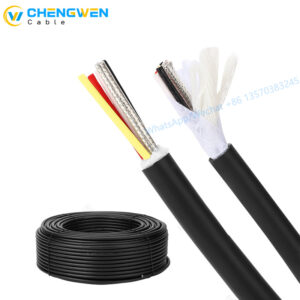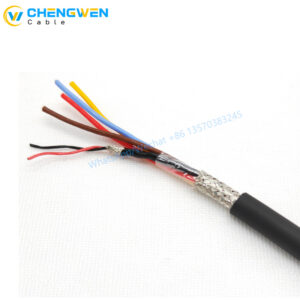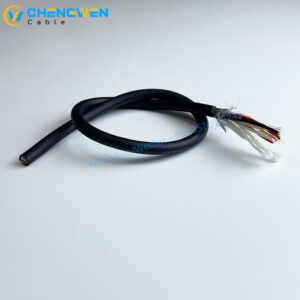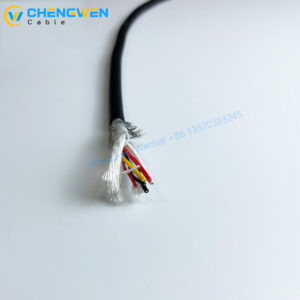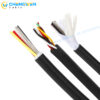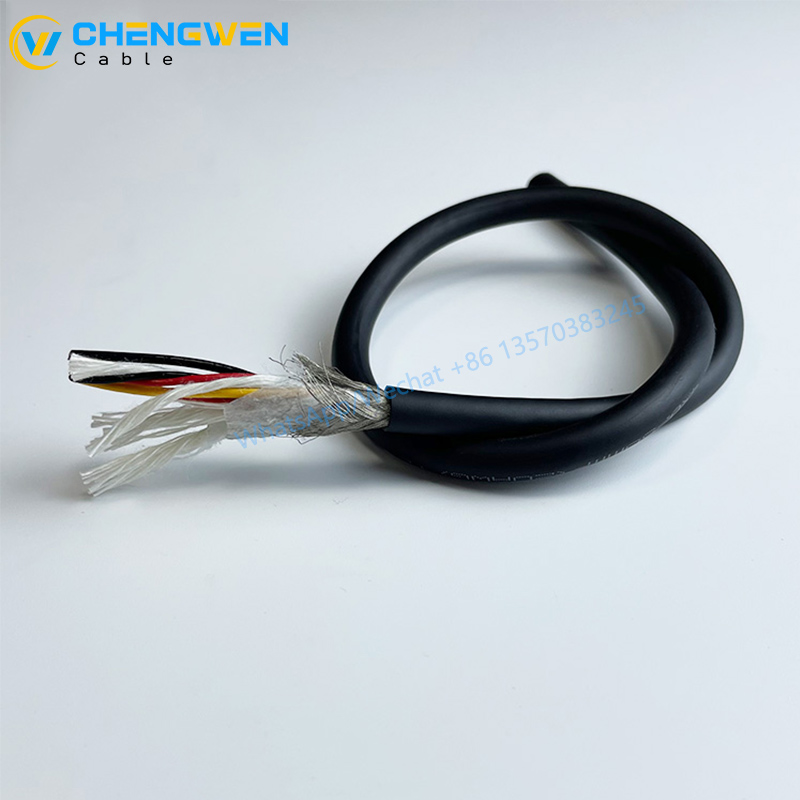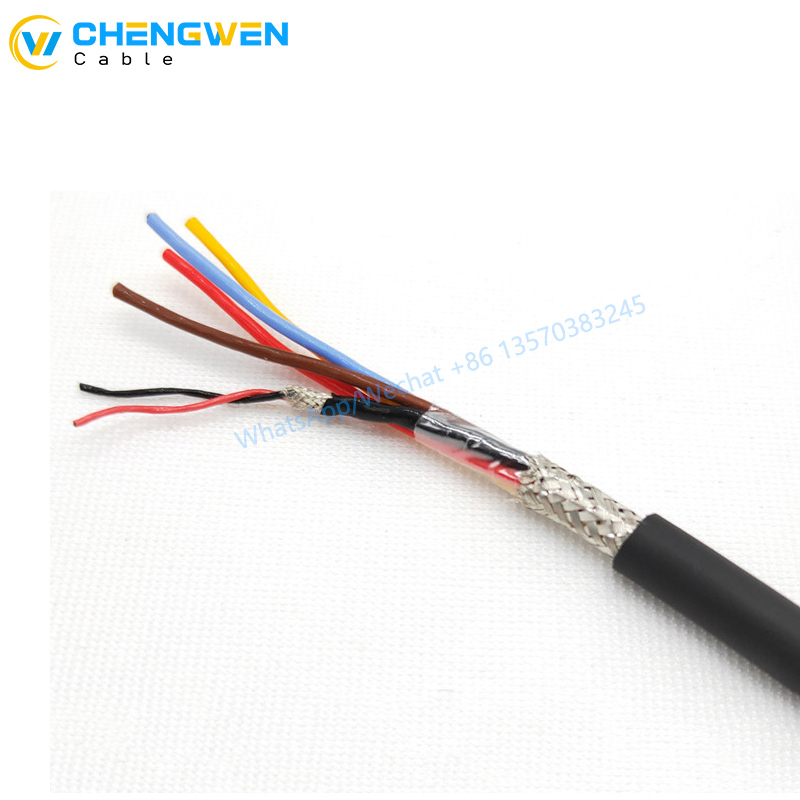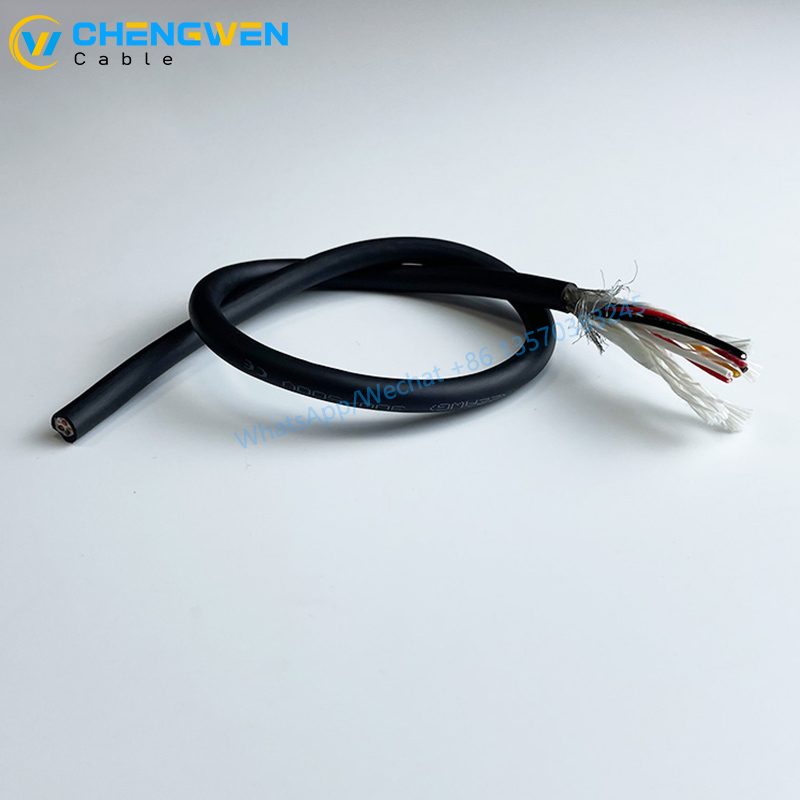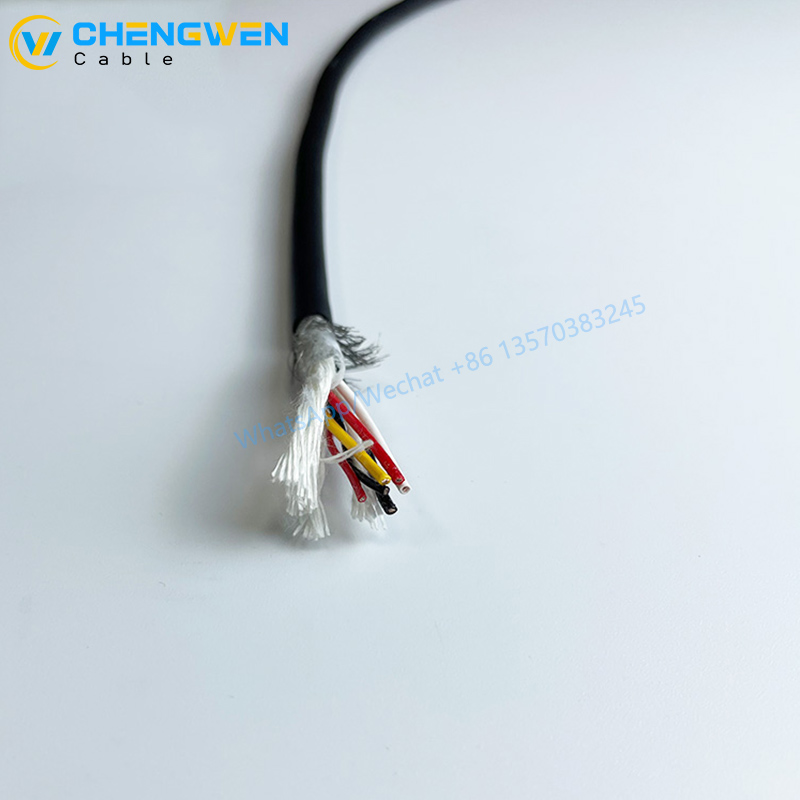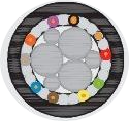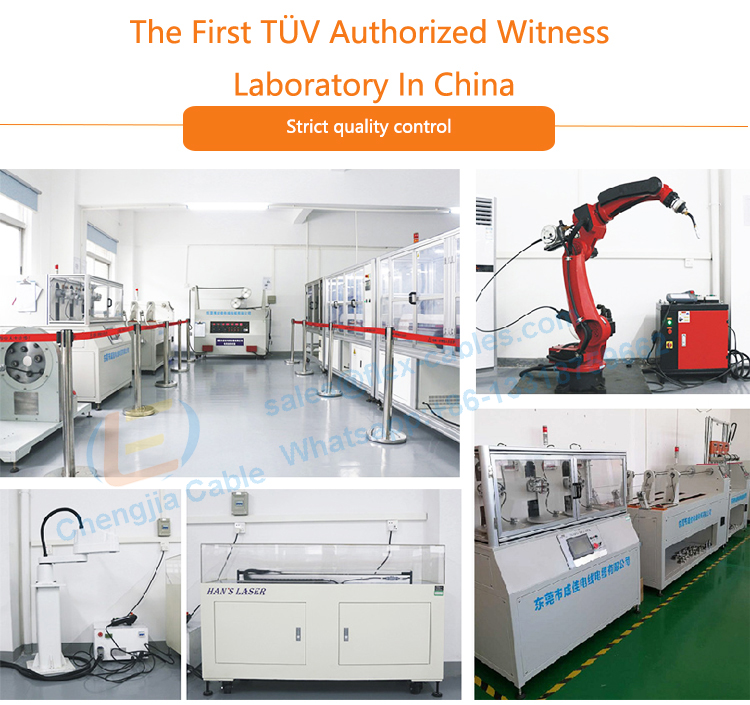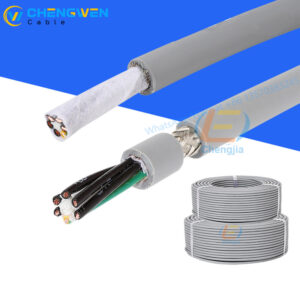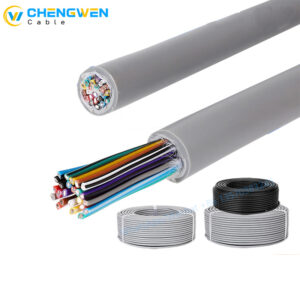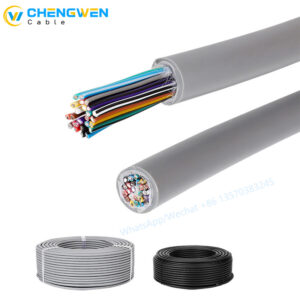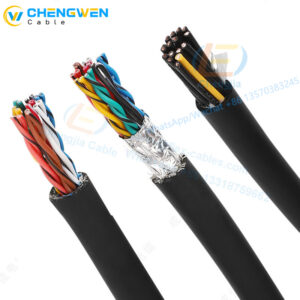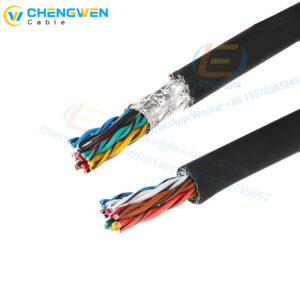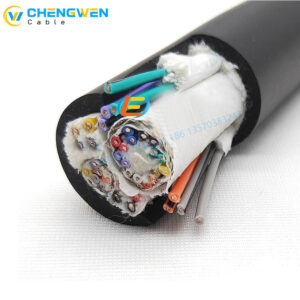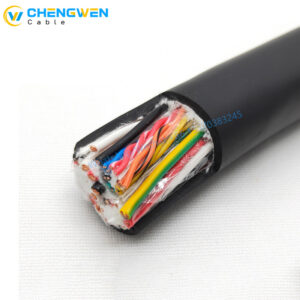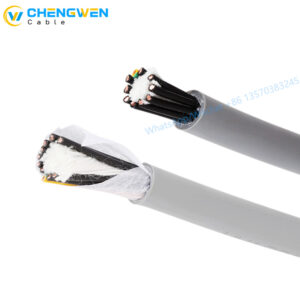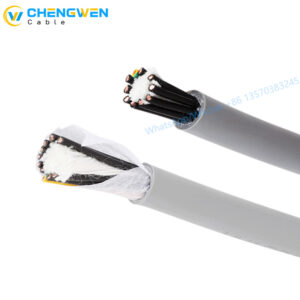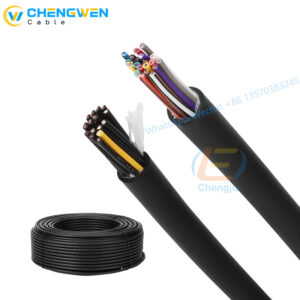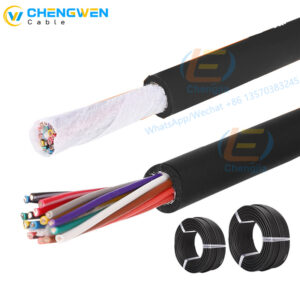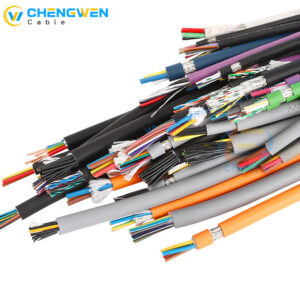This cable is particularly suitable for complex environments involving dancing robots, interactive robots, bionic robots, and other entertainment and sports robots. It can withstand continuous high-intensity bending, twisting mechanical stress, making it an excellent choice to ensure the reliability and long lifespan of robot products.
技術的パラメータ
● Special Teflon insulation, special PUR jacket, with ultra-high strength and bending, twisting performance
●TUV 2 PFG 2577クラスV要件に準拠しています
● Temperature range: Mobile installation -20°C to +80°C Fixed installation -40°C to +90°C
● Nominal voltage Uo/U 300/300 V
● Test voltage 1500 V
●絶縁抵抗:最小100MOhmxkm
●最小曲げ半径:モバイルインストール6倍ケーブル直径固定インストール4xケーブル直径
●EU ROHSに準拠し、規制に到達します
Telescopic robot twistable moving cables Structure
● Tin-plated copper conductor, ultra-fine copper wire Complies with DIN VDE 0295 Class 6 and IEC 60228 Class 6
● Special Teflon insulation
● Core wire color is color-coded
●コアの最適なピッチツイスト
● Improved tin-plated copper wire braided shielding
● 最低カバー率 85%
● Special fiber braided outer jacket
● Black color (RAL9005) with a matte finish
| TELESCOPIC ROBOT CABLE ( 50 million times reliability tests for drag chain) | ||||
| いいえ。 | 製品コード | コア数と断面積 | おおよその外径(mm) | 外被シース色 |
| (NO.Xm㎡) | ||||
| 1 | RO-FP5001.10.0008 | 10×0.08 | 7.6 | 黒 |
| 2 | RO-FP5002.16.0008 | 16×0.08 | 9.0 | 黒 |
2.2Dねじりテスト
テスト方法:2.5メートルの仕上げケーブルを取り、距離を1メートルで固定し、指定された重量を適用し、角度を正と負の90度または180度で回転させ、毎分60サイクルの速度でねじれを実行します。
判断基準:1。5,000,000サイクルの前後の動きを超えた後の開回路または短絡はありません。 2.鞘のひび割れはありません。
3.3Dねじりテスト
テスト方法:1メートルの仕上げケーブルを取り、標準要件に応じて距離を修正します。上部は正と負の90度で曲がっていますが、ベースは正と負の180度で回転します。毎分30サイクルの速度で曲げとねじれを実行する
判断基準:1。5,000,000サイクルの前後の動きを超えた後の開回路または短絡はありません。 2.鞘のひび割れはありません。
4.二輪曲げテスト
テスト方法:5メートルの仕上げケーブルを取り、指定されたプーリーの直径と重量に応じて、少なくとも1.0メートルの移動距離で速度0.33メートルの速度でプーリーを前後に動かします。判断基準:
判断基準:1。1,000,000サイクルの前後の動きを超えた後の開回路または短絡はありません。 2.鞘のひび割れはありません。
5.90度ベンドテスト
テスト方法:ケーブル直径の2.5倍の曲げ半径を持つ2メートルの仕上げケーブルを取り、標準で指定された重量を適用し、毎分40サイクルの速度で曲げを実行します。
判断基準:1。1,000,000サイクルの前後の動きを超えた後の開回路または短絡はありません。 2.鞘のひび割れはありません。
6.増加および回転テスト
テスト方法:1.5メートルの仕上げケーブルを使用し、距離を300mmで固定し、曲げ半径は150mmで、1分あたり50回転の速度で回転します。
判断基準は、50,000サイクルの往復運動を超えた後の開回路または短絡なし。鞘にひびが入りません。

